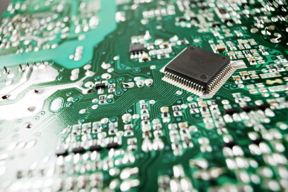Home > Press > Repairs using light signals: FAU research group develops smart microparticle that identifies defective parts in electrical appliances
 |
| Image: Colourbox.de |
Abstract:
Repairing complex electrical appliances is time consuming and rarely cost-effective. The working group led by Prof. Dr. Karl Mandel, Professorship of Inorganic Chemistry at Friedrich-Alexander-Universitt Erlangen-Nrnberg (FAU), has now developed a smart microparticle that enables defective components in these appliances to be identified more quickly and easily by using light signals. In the long-term, this could make repairs easier and extend the operating life of devices. The results have been published in the journal Advanced Functional Materials.
Repairs using light signals: FAU research group develops smart microparticle that identifies defective parts in electrical appliances
Nuremberg, Germany | Posted on July 16th, 2021
To identify defective components in a device, particles known as supraparticles are applied to the individual parts. These particles measure between one and ten micrometres and under black light they provide information about the component’s identity and temperature history (the temperatures the specific component was recently subjected to) by emitting blue, green and red light. This allows the device to be checked for defects while it is still assembled. The signal ratio between building blocks emitting green and red light determines the identity of the component. The maximum temperature can be read from the signal ratio of blue and green particles. If a specific temperature limit is exceeded, the blue signal irreversibly loses intensity. An overheated and therefore usually damaged micro-component can be detected by the weaker blue light signal it emits. The developed particles make it easier and faster to repair complex electrical devices and extend their operating life.
The supraparticles themselves consist of organic and anorganic nanoparticle building blocks that communicate information only when they are combined. The structure and quantity ratios of the nanoparticles determine the identity signals and temperature sensitivity. By changing the composition of the smart microparticles, the temperature sensitivity and the identity signal can be adapted to a specific product.
####
For more information, please click here
Contacts:
FAU Press Office
49-913-185-70229
@UniFAU
Copyright © University of Erlangen-Nuremberg
If you have a comment, please Contact us.
Issuers of news releases, not 7th Wave, Inc. or Nanotechnology Now, are solely responsible for the accuracy of the content.
News and information
![]() The virus trap: Hollow nano-objects made of DNA could trap viruses and render them harmless July 16th, 2021
The virus trap: Hollow nano-objects made of DNA could trap viruses and render them harmless July 16th, 2021
Chip Technology
![]() Argonne researchers use AI to optimize a popular material coating technique in real time June 25th, 2021
Argonne researchers use AI to optimize a popular material coating technique in real time June 25th, 2021
Sensors
![]() Sensors developed at URI can identify threats at the molecular level: More sensitive than a dog’s nose and the sensors don’t get tired May 21st, 2021
Sensors developed at URI can identify threats at the molecular level: More sensitive than a dog’s nose and the sensors don’t get tired May 21st, 2021
Discoveries
![]() Removing the lead hazard from perovskite solar cells July 16th, 2021
Removing the lead hazard from perovskite solar cells July 16th, 2021
![]() Scientists create rechargeable swimming microrobots using oil and water July 16th, 2021
Scientists create rechargeable swimming microrobots using oil and water July 16th, 2021
![]() Researchers discover a new inorganic material with lowest thermal conductivity ever reported July 16th, 2021
Researchers discover a new inorganic material with lowest thermal conductivity ever reported July 16th, 2021
Announcements
![]() Scientists create rechargeable swimming microrobots using oil and water July 16th, 2021
Scientists create rechargeable swimming microrobots using oil and water July 16th, 2021
![]() Researchers discover a new inorganic material with lowest thermal conductivity ever reported July 16th, 2021
Researchers discover a new inorganic material with lowest thermal conductivity ever reported July 16th, 2021
Interviews/Book Reviews/Essays/Reports/Podcasts/Journals/White papers/Posters
![]() RUDN University chemists obtained an unusual planar nickel complex exhibiting magnetic properties July 16th, 2021
RUDN University chemists obtained an unusual planar nickel complex exhibiting magnetic properties July 16th, 2021
![]() Scientists create rechargeable swimming microrobots using oil and water July 16th, 2021
Scientists create rechargeable swimming microrobots using oil and water July 16th, 2021
![]() Researchers discover a new inorganic material with lowest thermal conductivity ever reported July 16th, 2021
Researchers discover a new inorganic material with lowest thermal conductivity ever reported July 16th, 2021
Photonics/Optics/Lasers
![]() Graphene drum: Researchers develop new phonon laser design June 18th, 2021
Graphene drum: Researchers develop new phonon laser design June 18th, 2021
![]() Researchers tame silicon to interact with light for next-generation microelectronics June 11th, 2021
Researchers tame silicon to interact with light for next-generation microelectronics June 11th, 2021
![]() Luminaries: Steven DenBaars and John Bowers receive top recognition at Compound Semiconductor Week conference May 21st, 2021
Luminaries: Steven DenBaars and John Bowers receive top recognition at Compound Semiconductor Week conference May 21st, 2021










